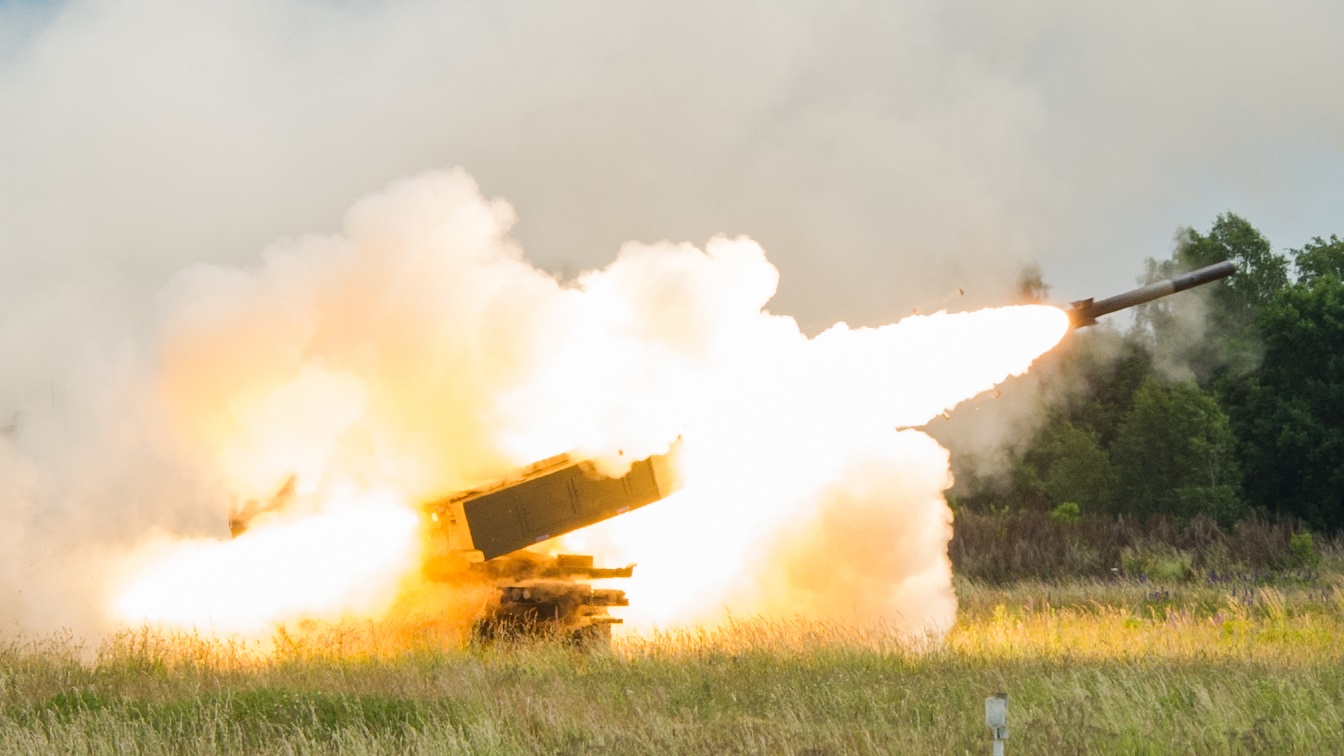Ukraine’s counteroffensive appears to be picking up steam. But over the weekend, a senior executive of Russian state-owned technology company Rostec claimed that Ukraine’s HIMARS multiple-launch rocket system is highly vulnerable to Russia’s upgraded Pantsir surface-to-air missile systems.
Since Kyiv first deployed the M142 High Mobility Artillery Rocket System against Russian forces, the launcher has proved to be a significant asset. In addition to helping thwart Russia’s advances, HIMARS has been used to take out Moscow’s logistics assets, personnel, and heavy weaponry. Now, however, Moscow reports to have an effective defense against the American-supplied system.
Surface-to-Air Systems
Russia’s self-propelled anti-aircraft gun and missile system was first conceptualized by KBP Instrument Design Bureau during the Soviet era. Given the moniker SA-22 Greyhound by NATO, the Pantsir-S1 was designed to protect military facilities against enemy cruise missiles, UAVs, and airframes. The first variant was completed in the mid-1990s. Following the collapse of the USSR, the Pantsir was redefined as a short-range defense platform.
Comprising precision-guided munitions, anti-aircraft guns, missiles, and UAVs, the Pantsir system is estimated to have a hit probability of 70-95%. The system features a solid-state search radar that allows it to track up to 20 tactical targets within range, according to the Center for Strategic and International Studies. As CSIS explains, “The baseline Pantsir system is equipped with up to twelve 57E6 missiles and two 30mm 2A38M cannons, allowing it to engage up to four targets simultaneously. The 57E6 is a two-stage missile with radio-command guidance and 20 kg blast-fragmentation warhead.”
Rostec has reportedly designed an improved Pantsir variant that has a 100% success rate in taking down the HIMARS. While details are short surrounding this achievement, Russia’s Ministry of Defense claims to have intercepted nearly a dozen HIMARS shells over a 24-hour period. Despite these claims, however, footage appears to prove that Ukrainian forces are still using HIMARS effectively to recapture territory.
Video Shows HIMARS at Work
This week, the open-source intelligence group Ukraine Weapons Tracker published a video showing the destruction of a Russian 2S4 Tyulpan 240m self-propelled mortar. The incident reportedly occurred near Zaitseve, Donetsk oblast, and was filmed by a reconnaissance drone. In the 58-second clip, the self-propelled mortar is targeted and struck, and it erupts in flames. According to @UAWeapons, a GMLRS strike was responsible.
HIMARS can fire its payload of six missiles against targets located within 43 miles, and it can evade enemy fire. Ukraine has received HIMARS with limited ranges from the U.S. and its NATO allies as part of the aid packages frequently delivered to the country. Since Kyiv first deployed HIMARS in the war, Ukrainian forces have been able to cut off Moscow’s access to strategic cities and have destroyed substantial quantities of military equipment. Despite Rostec’s claims, HIMARS will remain an integral part of Kyiv’s defensive efforts in the future.
Maya Carlin, a Senior Editor for 19FortyFive, is an analyst with the Center for Security Policy and a former Anna Sobol Levy Fellow at IDC Herzliya in Israel. She has by-lines in many publications, including The National Interest, Jerusalem Post, and Times of Israel. You can follow her on Twitter: @MayaCarlin.
From 19FortyFive
Total Massacre’: Ukraine Footage Shows Russian Cruise Missile Shipment Attacked
Video – Ukraine Has Massive New NATO ‘Cannon’ Ready To Fight Russia
‘Americans Will Pay The Price’: One Democrat Is Angry At Joe Biden

